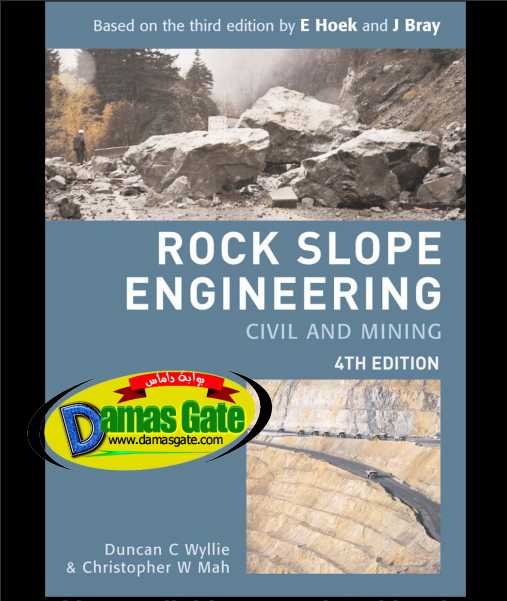Rock Slope Engineering - Civil and Mining

Introduction
Readers will undoubtedly recognize the similarity of this book to Rock Slope Engineering by Dr Evert
Hoek and Dr John Bray. We hope the following discussion of the origin and evolution of the current
book will help to demonstrate the relationship between the two.
Rock Slope Engineering was published in three editions (1974, 1977 and 1981) by the Institute of
Mining and Metallurgy in London. The original research for the book at the University of London
was sponsored by the mining industry in response to a need to develop design methods for increasingly
deep open pits. The 1960s and 1970s had seen the development of a new generation of high
production drills, shovels and trucks that made low grade ore deposits economical to mine, and there
was a consequent significant increase in the size of open pits. The investigation and design techniques
originally developed in Rock Slope Engineering for mines were soon adopted in civil engineering
where the slopes’ heights are usually less than those in open pits, but there is a need for a high level of
reliability in terms of both rock falls and overall stability. In response to the demand for a book that
clearly presents well-proven methods to design rock slopes, Hoek and Bray’s book has continued to
sell steadily around the world, and has been translated into a number of languages.
In 1980, one of the authors of this book (DCW) was awarded a contract by the Federal Highway
Administration (FHWA) in Washington to prepare a manual on rock slope design and construction
specifically applicable to highways. At that time, I was working with Dr Hoek and he generously agreed
that his manuscript of Rock Slope Engineering could be adapted for this purpose. The manual closely
followed the original book, apart from chapters on slope stabilization and movement monitoring.
A second FHWA contract was awarded in 1996 as part of an eleven module series on highway
geotechnical engineering, and this opportunity was taken to embark on a major updating of the
manual. The manuals have been used primarily as teaching material for a series of courses sponsored
by the National Highway Institute for highway engineers in the United States; to date over 40 courses
have been presented.
Download
http://s18.alxa.net/s18/srvs2/02/001...and.Mining.rar